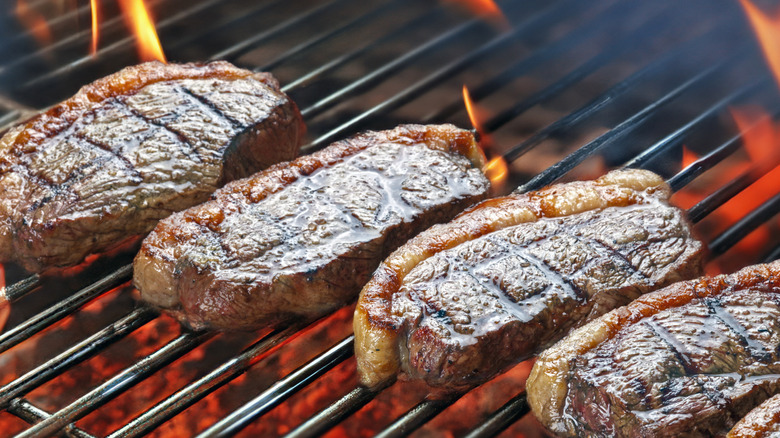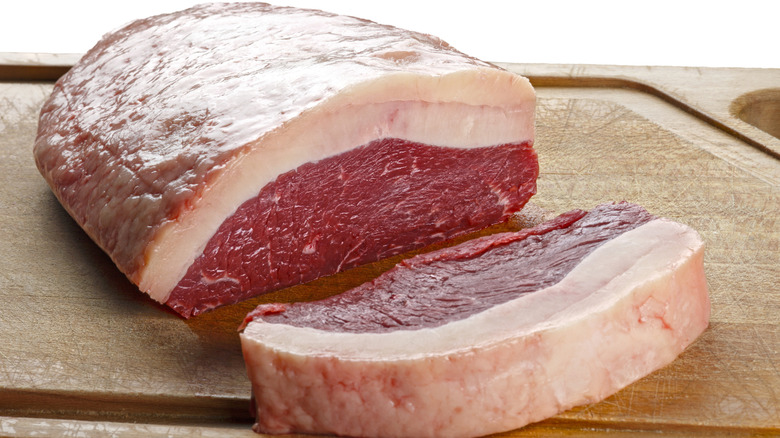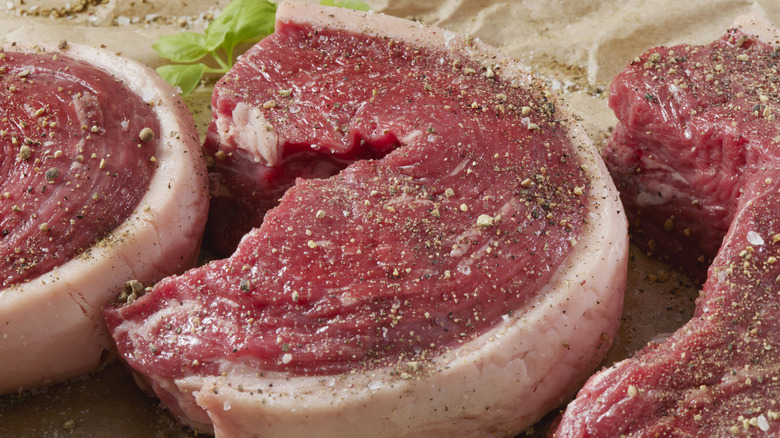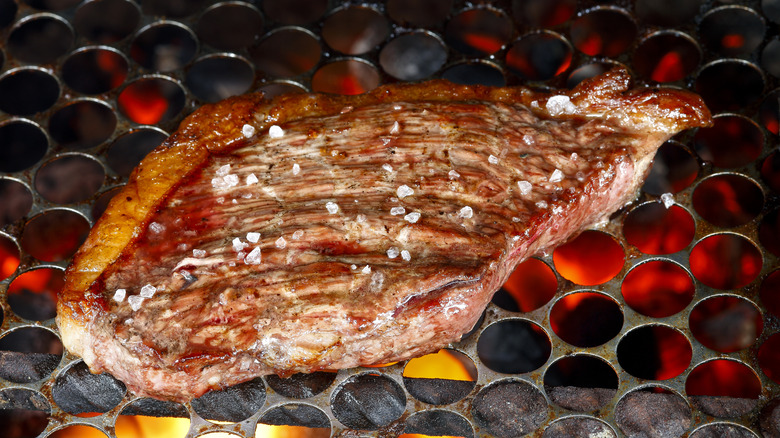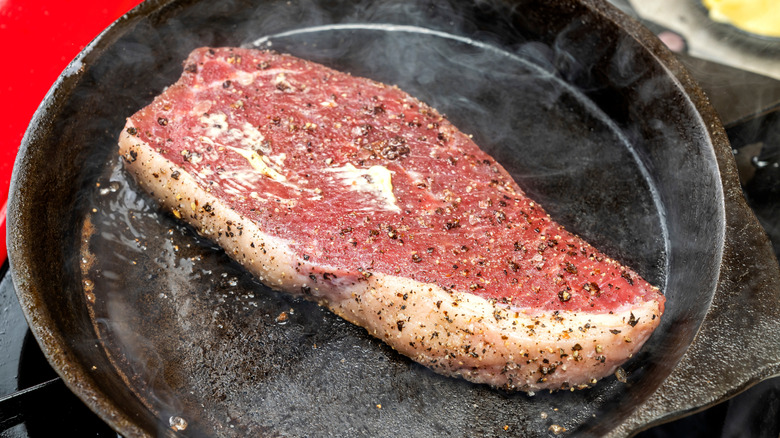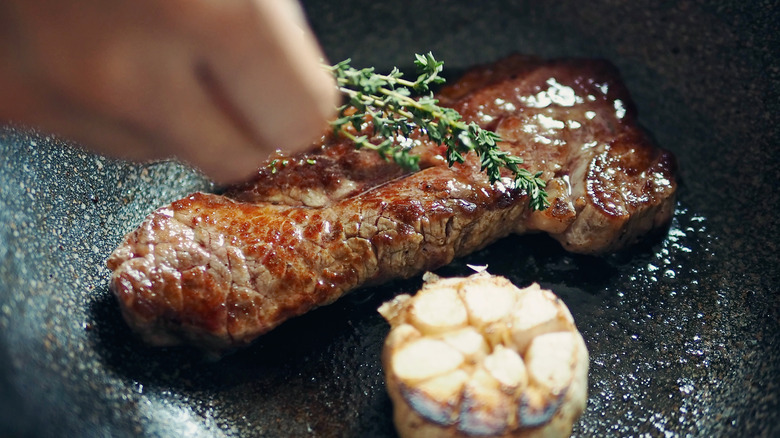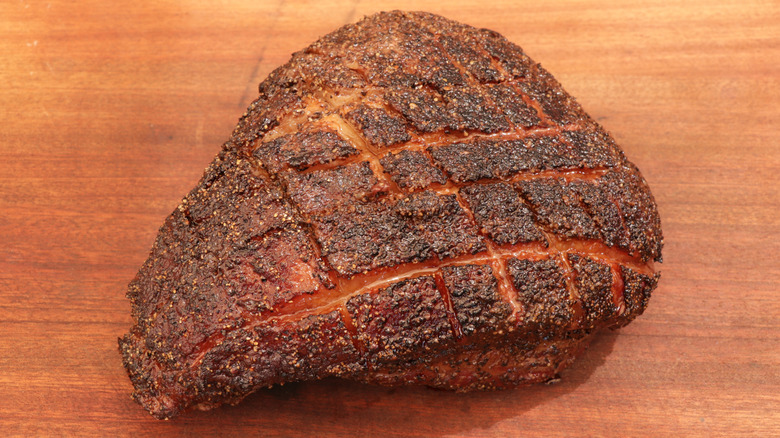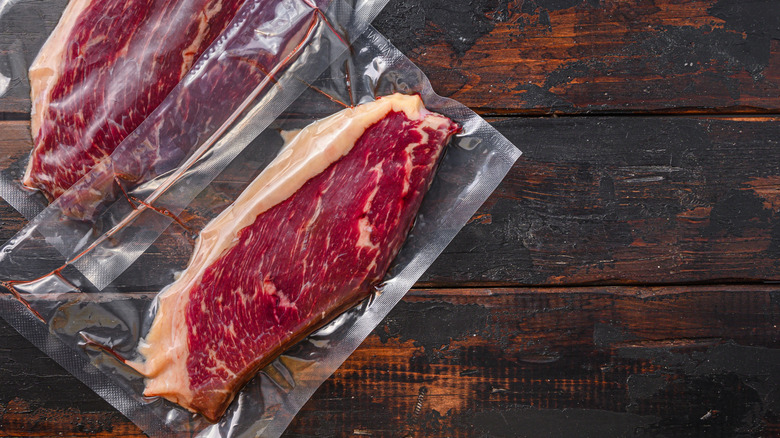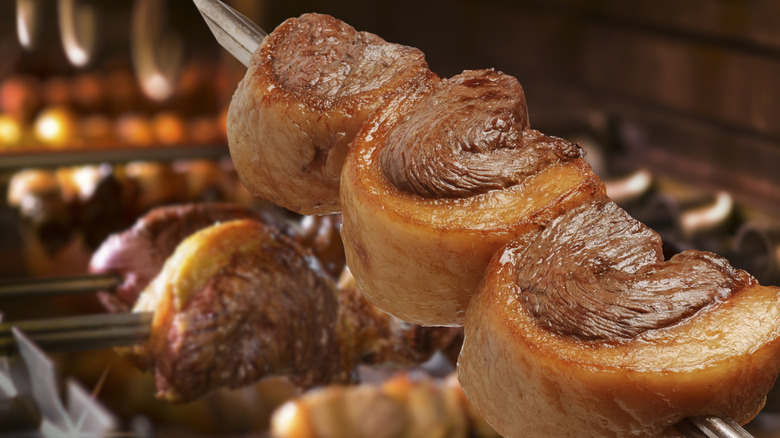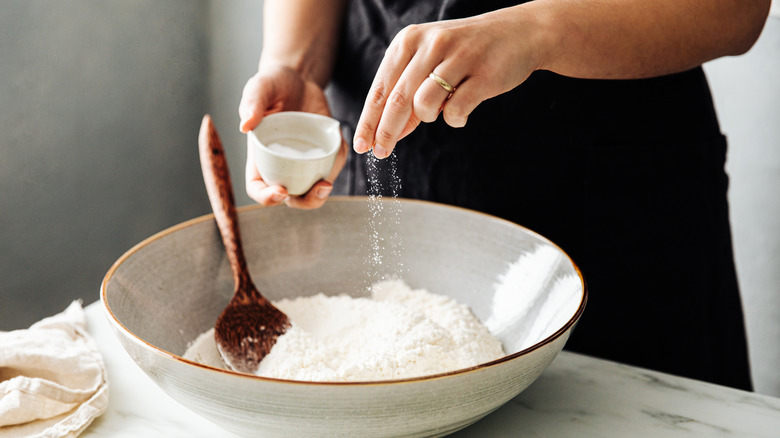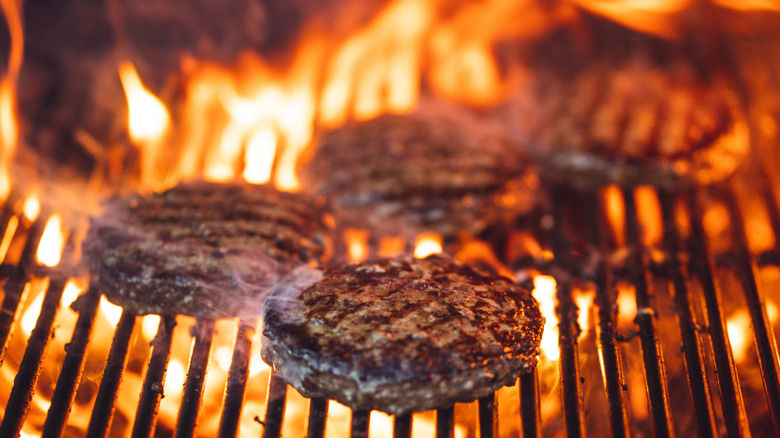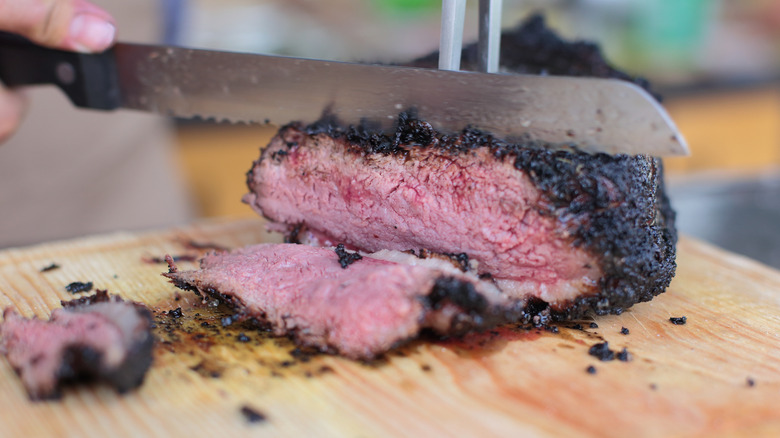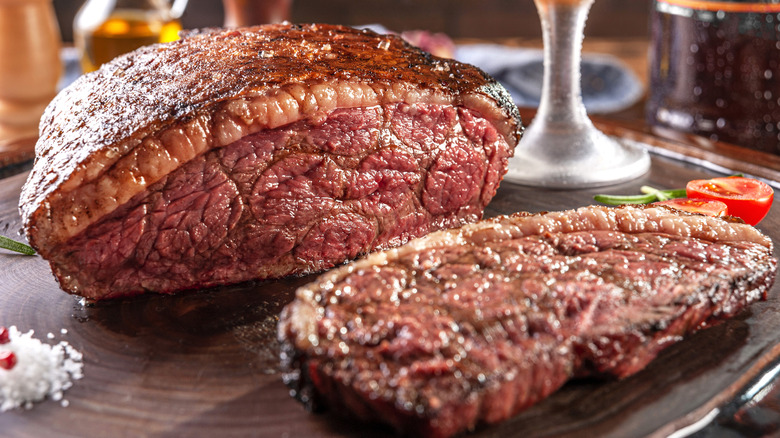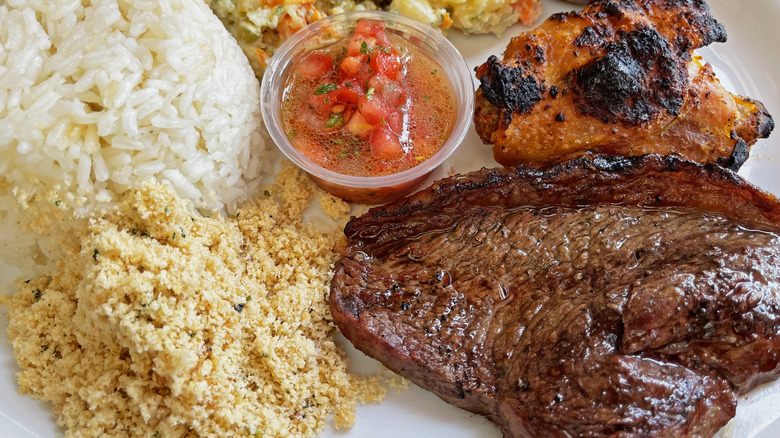What Is Picanha Steak And What Are The 9 Best Ways To Cook It?
Picanha is a beef cut easily distinguished by the thick fat cap that covers the top. Though this is one of the favorite cuts in Brazilian steakhouses, its global popularity is fairly recent and coincides with the international expansion of these meat-centered restaurants. Picanha proved to be a cut with great potential that combines the ideal ratio of tenderness and chew. The marbling promises beautiful texture and flavor, while the signature fat cap is an additional bonus. As more people are becoming interested in this unique cut, we wanted to give you a full story about picanha, and the best way to do it was to look for professionals who could provide the most valuable information.
We consulted with Rosangela Teodoro, the owner and proprietor of Teodora's Boucherie Gourmande, a European-style, craft-cut butcher shop in Cohasset, Massachusetts. As a third-generation butcher, Teodoro knows all about meat, and as she grew up in Brazil, she knows Brazilian barbecue tradition and is very familiar with picanha. We also talked to Chef David Rose, an executive chef at Omaha Steaks and is a regular guest on various culinary shows. Rose finds inspiration in the American South and his Jamaican heritage, but steaks are his forte, and he was happy to provide the details on the best ways to cook this prized cut.
What is picanha?
Picanha is a unique cut of beef closely associated with churrasco — a traditional Brazilian barbecue. Rosangela Teodoro explains that it's cut from the top of the rump and that you can differentiate it by a thick layer of fat that covers the top of the steak, while David Rose adds that it is sometimes labeled as sirloin cap roast or coulotte steak. As the cut is static, it's the perfect blend of tenderness and meaty texture. "Unlike other cuts that can be lean or tough, picanha is juicy and full of character, making it a favorite for grilling," adds Teodoro.
Rose clarified that this cut might be more difficult to find, but putting extra effort into seeking it out is definitely worth it. He added that picanha is "considered the most delectable cut for Brazilian steakhouses and becoming increasingly popular in the U.S." At Omaha Steaks, the butchers cut it from beef that has been aged for at least 30 days.
Teodoro mentions that picanha is versatile and suitable for various cooking methods, always delivering flawless results. She also added that the fat cap that melts and bastes as it cooks is its most attractive feature, and the reason why it is tender and full of flavor.
Prep and season the steak before cooking
Before you choose your preferred cooking method for cooking picanha, you should prep the steak to amp up texture and flavor. When you're ready to cook it, you should first pat dry it to remove any surface moisture. David Rose recommends using a sharp knife to etch a crosshatch pattern over the fat cap as the first step. This step will allow the fat to render better, which will help it crisp up in the process.
When the steak is prepped, it's time to season it. Rose keeps it classic with a hefty dose of salt and pepper, while Rosangela Teodoro suggests being creative and experimenting with your favorite marinades and spices. She also recommends smoking the steak for an extra flavor kick and mentions that "people like to rub it with garlic and herbs before cooking to add extra depth to the flavor."
1. Grilling is the classic method
Though there are many ways to prepare picanha, grilling is still considered classic and a firm favorite by our experts. "The smoky-charred notes on the picanha are second to none when coming off of the direct flame on a grill," says David Rose, but he also clarifies that you can grill it using a gas stove. Rose cleans and seasons the grates and starts cooking the steak by placing the fat cap down. He recommends searing it for five minutes on each side and then moving the meat to the cooler side. His recommendation is to turn the meat frequently and keep it on the grill for approximately 35 minutes if you want rare steak or 40 minutes for medium rare. Remember that the meat will continue to cook off the grill, so make sure to take it off when it's 10 degrees below your ideal temperature.
For Rosangela Teodoro, grilling over an open flame is the ultimate preparation technique for picanha. "This method brings out the smoky flavors that complement the richness of the fat cap," she explains. She also prefers to cut thick steaks and keep the fat, and then grills the steak for approximately five minutes on each side, depending on the preferred stage of doneness. However, she claims you should go for the medium-rare steak, as anything over that might make it tough and chewy.
2. You can also try pan-searing
Besides grilling, pan-searing is a cooking method that is perfect for picanha. Rosangela Teodoro says this should be your go-to method if you're aiming to attain a perfectly crisp crust.
If you opt for this technique, you should start by heating your stainless steel or cast-iron skillet over high heat. Before you start the process, make sure your steaks are prepped and seasoned, and then place the steak in the pan and make sure you start with the fat side down. This approach will allow the fat to slowly render and attain a nice crust. Once you attain that crisp layer, turn the steak on the other side. Chef David Rose emphasizes that you should pay attention to keep each side equal time if you want a consistent sear. "If the steak is thick, you can finish it in the oven at around 180°C (350°F) for just a few minutes to bring it to medium-rare," suggests Teodoro.
3. Reverse sear is an acceptable technique
Reverse sear is another great method for cooking picanha. This is a foolproof, slow-cooking technique ideal for thicker steaks to ensure you won't overcook them or end up with raw meat. Reverse searing mimics the classic approach but does it in reverse. The steak is first cooked in the oven and then seared in a pan.
David Rose explains that reverse searing is a common technique used with other cuts and is best suited for those not confident with cooking steaks on a grill or a skillet. He warns you should be careful not to overdo it in a skillet. You want to sear the steak just until it attains the perfectly brown crust.
Rosangela Teodoro thinks a reverse sear is a great option for picanha "if you want more control over the doneness." She explains that this approach calls for keeping the oven temperature low to make sure the steak cooks evenly. "Once it's about 10 degrees shy of medium-rare, you sear it in a hot pan to develop a beautiful crust," instructs Teodoro. She claims the method will yield a perfectly cooked steak with a flawlessly crisp crust.
4. Use your oven to cook picanha
Instead of the reverse sear, you can also cook picanha the classic way by searing it and then finishing it in the oven. For this method, Chef David Rose suggests pre-heating the oven to 250 degrees Fahrenheit. The first step is to prep the steak and then sear it for three to five minutes in a pre-heated large skillet. Use canola, avocado, or olive oil so the steak won't stick. Once you get the perfect crust, place the steak on a baking sheet covered in foil and cook until it reaches the desired doneness. Chef Rose suggests cooking the steak slowly at a lower temperature. His suggestion is to cook it for 1 hour and 10 minutes in an oven set approximately to 135 degrees if you prefer rare steak, while it should get to the medium rare stage in 1 hour and 15 minutes if you keep the oven between 135 and 140 degrees Fahrenheit.
Rosangela Teodoro suggests a slightly different technique. She claims that picanha in the U.S. is usually cut in half, so it does not need much time. After searing, Teodoro suggests cooking it in the oven set at 350 degrees Fahrenheit. It shouldn't take more than 15 minutes to reach the medium-rare stage. She claims this is the best way to make sure you end up with a tender, perfectly cooked steak.
5. Sous-vide method is another good option for cooking picanha
If you're not familiar with sous-vide, it's best described as a culinary method that involves cooking vacuum-sealed food in a water bath. This traditional French technique ensures consistent temperature and reliable results, and it helps avoid the typical perils of undercooked or overcooked steak. It requires a basic sous-vide machine and plastic pouches to seal the food safely. Once you set the temperature, the machine will do all the work for you.
Although it's one of the less traditional techniques, it's possible to cook picanha using the sous-vide method. "Picanha works wonderfully with sous vide cooking, especially if you want that melt-in-your-mouth tenderness," claims Rosangela Teodoro. She suggests cooking it at 129 degrees Fahrenheit for approximately 2 hours and searing the steak afterward. Teodoro explains that sous-vide will slowly render the fat, which will greatly contribute to the flavor.
Though he claims that the sous vide method can be used with picanha, Chef David Rose believes this approach is better suited for other cuts. For picanha, he would rather choose grilling, roasting, or smoking. If you choose this method, Rose explains that it's very important "to be sure the fat side is down and your temperature is accurate."
6. Recreate traditional style by opting for rotisserie method
In South America, picanha is traditionally cooked using the rotisserie method. The cut is first sliced into thick steaks and installed on long metal skewers. The skewers are then nestled on top of an open fire, and the steaks are slowly cooked until done.
Rosangela Teodoro confirms that the rotisserie method is traditional in its native country and absolutely recommends trying it if you have the right equipment at home. She claims this technique is amazing as the fat slowly renders and bastes the meat to keep it juicy and flavorful. It also creates a wonderfully crispy layer while the center remains juicy and tender.
Chef David Rose also recommends the rotisserie method. He emphasizes that it is "important to get the internal temperature accurate to be sure it is done." Rose also mentions that you might want to sear the steak first, which will help lock in all the juices. He also warns you should be extra careful to cook the steak evenly on each side.
7. Cover it in salt crust
Covering fish or meat in a thick salt crust is a familiar culinary method that can easily be recreated with picanha to provide spectacular results. The typical process involves mixing salt with a small amount of flour and egg whites to make a stable mix that you can evenly distribute over the bottom, sides, and top of the cut. Once picanha is sealed on all sides, cook it in a pre-heated oven for approximately 30 minutes at 400 degrees Fahrenheit. The salt acts as a seal that will prevent the meat from drying out, and it will keep all those delicious juices locked so you'll end up with a moist and succulent beef.
Instead of standard salt, you can experiment with other types of salt. Flavored salt would be an amazing option for picanha. Choose a variety enriched with herbs to attain a herbaceous and earthy touch, or go for smoked salt if you prefer light smokiness with your steaks. You can buy the pre-packed flavored salt or use regular salt and tweak it with the flavors you like to pair with beef.
8. Make it into burgers
One of the less traditional ways to cook picanha is to turn it into a juicy burger. David Rose and Rosangela Teodoro agree that the ratio of fat and meat makes this cut great for this type of preparation. David Rose tells us that doing the burger route with picanha steak is great. But if this is your first encounter with this steak, he recommends choosing something more traditional, like a classic roast, which will leave enough leftovers that you can use as a taco or quesadilla filling.
Teodoro claims picanha would make "an incredible burger" because the higher fat content greatly contributes to the flavor and ensures that the burger stays moist. Teodoro also recommends grinding the picanha at home to make sure you get the best fat-to-meat ratio. She claims using this meat as a burger has "a rich, beefy flavor that stands out, even with minimal seasoning."
9. Smoke it
If you're lucky enough to have a smoker at home, you'd be happy to hear that picanha is also suitable for this type of preparation. For the best results, use the whole cut. Season the meat according to personal preference, give it enough time in the smoker, and you will get a perfectly cooked chunk of meat loaded with subtly sweet, smoky notes.
Chef David Rose explains the process. He suggests pre-heating the smoker to 250 degrees Fahrenheit and prepping the steak as suggested. He recommends starting with the fat cap down and turning it over after 30 minutes. Smoking time and temperature will depend on the preferred stage of doneness. For rare picanha, keep the temperature between 125 and 135 degrees and smoke it for approximately an hour and 20 minutes. To get to the medium-rare stage, your temperature should stay between 135 and 140 degrees, and you should smoke it for an hour and 30 minutes.
Don't rest picanha for too long
Anyone who has tried to cook steak at home is probably familiar with the step that entails leaving the steak to rest after cooking. It ensures that all those meaty juices are evenly distributed and stay locked in, making the meat tender and juicy. Cutting into it too soon leaves an open window for the juices to pour out, risking dry and tough meat. Our experts disagree on whether picanha calls for a resting period. While David Rose thinks you should include it, Rosangela Teodoro believes that it's not necessary.
Rose believes that you should "let it rest for 10 to 15 minutes, depending on the size of the roast," to help it retain all the flavors and juices. Teodoro thinks differently. In her opinion, it does not need a resting period. She claims leaving it to rest for too long might end with a tough and chewy steak. "The key to enjoying picanha is to serve it hot immediately after cooking," she explains. In this case, perhaps it's best to try both approaches to see what works best for you. Regardless, don't leave picanha to rest for too long.
There are various creative sides to serve with picanha
Once you choose your preferred cooking method, it's time to serve picanha. To enjoy its full potential, it's important you cut it correctly and serve it with dishes that would accentuate its many qualities. To start with, make sure you cut the meat against the grain. David Rose and Rosangela Teodoro argue that this is the only acceptable way to enjoy picanha.
When it comes to service, you can always stick to tradition. Rose explains that this cut is usually served with farofa, which he describes as "a blend of toasted cassava or cornflower, crispy bacon bits, diced onions, minced garlic, fresh parsley and chimichurri seasoning." Farofa is easily recreated at home, and the ingredients are easy to find. Teodoro says that tradition stipulates you should sprinkle some coarse salt over the steak, and besides farofa, she recommends serving it with rice and a zesty combination of tomatoes, onions, and parsley. Rose also points out his signature pairing of grilled picanha with harissa crema, creamed corn, and vinegar-loaded slaw. Regardless of what you decide to serve on the side, picanha will always be the star of the meal, so make sure to cook it as our experts recommend.
